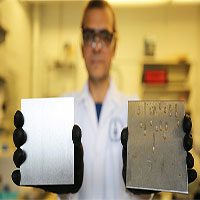Besides secret weapons (as the Hollywood series Mission Impossible often depicts), intelligence and talent, spies have a very special weapon: memory!
Memorizing all information without putting it on paper or using photos or audio tapes is a challenge for all agents of intelligence agencies around the world.

Memo is also one of the special weapons of the spy.
Warren Reed – a former agent of the British Foreign Intelligence Service (MI-6) now working for the Australian Intelligence Service ASIS – has his own simple technique to train memory . One of the first things that spies need to learn is to find a way for their memory to be able to remember more than usual, not only for success but also for survival.
“If a spy surrenders, the situation can deteriorate in an instant. Spies are still people, sometimes they are afraid,” Reed said.
“If they betrayed themselves, they would not survive. They would be killed in a car crash or fake traffic accident or could be dragged out onto the street, tortured and killed. Worse yet, while on a mission, an agent can’t say, ‘What’s the trajectory of the missile, how many kilograms are you transporting? Excuse me, wait a minute while I get a pen and paper,” Reed explained.

Childhood memories in the dear home you lived in since childhood will greatly contribute to memory training, according to former MI-6 agent Warren Reed.
Reed calls his mnemonic technique “my family home” —a visual association technique he developed and practiced.
There are two things you need to keep in mind. The first is “the known” and then the “unknown” – that is, the information you need to remember.
“The known” is “my family’s house”
Imagine your childhood home, Reed explained. If you’ve been living in an apartment for a while, that’s fine. But it’s better to be in the house you’ve lived in for many years or grew up in as possible because the house is big, has space, has nooks or crannies or dark corners that you used to hide in.
And now imagine a circuit in which you will enter the house that you know well. Starting at the door, go through the main entrance, into the kitchen, bathroom and bedroom. Go around the house and go back to the main door. Along the way, keep in mind the nooks and crannies, where to store shelves, furniture and other items.
Keep that circuit in mind.
The second thing is that you need to have a clear picture of the “unknown” in your mind. This is information you need to keep in mind and must remember!
Observing the surrounding situation, what do you need to keep in mind? What is someone saying or are they telling a story? Is it an image where you need to remember the exact color and shape of something, or the layout of a room where you need to remember the location of each item? That long number? Is it the sequence of events?

One of the first things that spies need to learn is to find a way for their memory to be able to remember more than usual.
Try to “break” that massive piece of information into informational elements.
Now, arrange the important elements of the situation, dialogue, story, arrangement or image you need to remember and place them in the space of the house within the circuit you have outlined. For example, put it on a shelf or on top of a cabinet…
You can also draw caricatures of objects and elements to make them look funny.
The more drawings and the more unfamiliar, the more elements are engraved in your mind. If it’s a long number, or a sequence of events, make it something out of the ordinary or give it a human element like drawing teeth, coloring or special construction.
Once you have finished placing the elements in the loop, return to the first element. Now you run that circuit in your head and review the elements you have placed on the loop.
By placing the elements you need to remember somewhere on the circuit that you know well, you have organized the “unknown” into “the known”. “That will stick in your heart,” Reed explains.
Reed said that during his training as a spy, he often had to remember 100 elements, but in everyday situations, you don’t need to remember more than 20 pieces of information to remember the entire situation. you need to recall.

